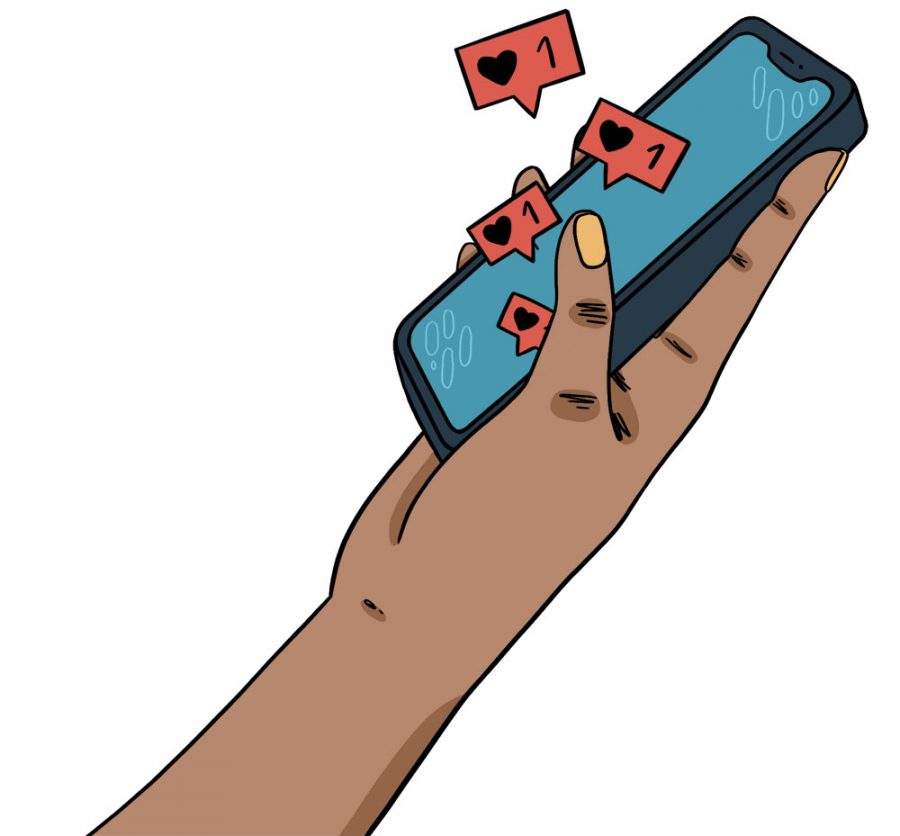A clear and exact definition of body image, according to the National Eating Disorders Collaboration (NEDC), is “a person’s perception of their physical self and the thoughts and feelings, positive, negative or both, which result from that perception.” This impression is usually formulated by internal judgements, but can be impacted by external factors in the process.
Some of these components include the views of family members and friends, outside acquaintances and in recent years, an onslaught of images shared through social media.
According to the NEDC, much of the content spread through the various types of media promotes “unrealistic, unobtainable and highly stylised appearance ideals,” that “cannot be achieved in real life.’’ It added that people often face feelings of dissatisfaction with their bodies because of standards set by the media, which can lead to both physical and mental health issues if a person attempts to quickly adapt to the created norm.
Sarah Killoren, associate professor at the Department of Human Development and Family Science at the University of Missouri—Columbia, said there are comparisons between body image and social media based on studies that focus on adolescent development.
“The time someone spends on social media is associated with different aspects of body image,” Killoren said. “Overall, more time on social media is linked to a higher drive for thinness, more disordered eating, more focus on one’s appearance and greater body dissatisfaction.”
She said, however, it was important to note that while there are significant correlations between media and body health, both physical and mental, these associations do not fully prove time spent on social media causes poor body image or disordered eating.
Ginny Ramseyer Winter, assistant professor at the School of Social Work at the University of Missouri—Columbia and Director of the Center for Body Image Research and Policy, said the levels of negative body image vary between different categories of people, some of which include women and transgender individuals. A study published by the National Library of Medicine found that about 25% of male children and adolescents in the U.S. felt dissatisfied by their body, while another study published in the Wiley Online Library found that 50% and 80% of girls aged 13 and 17 respectively revealed feelings of body dissatisfaction. Females expressed a much larger amount of discontentedness with their bodies. Although the study is limited to adolescents, Winter said people of all ages can experience the effects of negative body image.
“It is important to note how early this starts,” Winter said. “Children as young as three can articulate that thin is good and fat is bad; some girls in elementary school are starting to diet, which can severely impact their growth and development.”
According to kidshealth.org from Nemours Children’s Hospital, giving kids compliments to strengthen their self-esteem and teaching them how to maintain a healthy lifestyle that is not centered on how they look helps children grow with healthy behaviors concerning their body rather than those induced from exposure to adverse body perception. It said building a framework based on positive body health at a young age provides a higher chance of children maintaining that mindset and thriving as they grow older.
Killoren said rather than categorizing body image as either positive or negative, research and evidence can help show when and how it harms people, and where it is more neutralized. She said the factors that influence a person’s self-perception are often shared throughout a common environment and among close relationships.
“Parents’ body image is associated with their children’s body image, particularly for mothers and daughters,’ Killoren said. “Friends and romantic partners can also have influence on one another’s body image by engaging in conversations about their bodies.”
Research Killoren has looked at has shown that in children and adolescents, television has a large impact on internalized self-representation, alongside family and peers as kids enter a school environment. Killoren said sometimes television influences young people by “having an impact on what they think is a “good” versus a “bad” body.”
Media content can become dangerous to users in its impacts on their perceptions of themselves, RBHS nurse Tammy Adkins said. There is a risk of constant exposure to content that promotes unhealthy behaviors, and then picking up on such habits. Adkins said the more negatively people view their bodies, the more damage they can cause themselves.
“A person’s perception of their body can become harmful to themselves,” Adkins said. “Especially if it escalates to the development of eating disorders or episodes of self-harm or suicidal ideations which in turn, change physical and mental health.”
Another possible result of a negative body image is fixating on being thin and comparing oneself with others as a result of lowered self-esteem and possible depression, said Killaren. This in turn could lead to an eating disorder and increasing body dissatisfaction. Since body image is an internal perception, however, it is susceptible to change. Killaren said body image does not have to be a fixed ideology, and can fluctuate with time.
“I think that it is possible to help people change the way that they think of their bodies in order to have a more positive body image,” Killoren said. “For instance, there are researchers at the University of Missouri who have found positive effects of a body image intervention that they tested with college women.”
Although there are negative effects of social media on body image, there can also be positive outcomes. According to an article by King University, health-based accounts can provide inspiration for individuals to create fitness plans, as well as health and wellness information to give viewers a more positive outlook on their body. Winter said although social media provides an outlet for all types of media, users can better protect themselves by immersing in constructive, healthy content.
“What I always recommend is to fill your feeds with positive body image influencers,” Winter said. “Make sure you are seeing posts that support neutral and positive body image and not just negative body image, and unfollow those who are spouting diet culture and negative body image.”
Winter went on to say body image is both taught and shaped from a person’s surroundings. She said the consequences that spring from a person’s negative perception of themselves must therefore be addressed in terms of both environments.
“We cannot solve this problem by [only] addressing it at the individual level,” Winter said. “We must address the societal weight stigma and fatphobia to truly improve body image on a large scale.”
How do you feel social media impacts body image? Let us know in the comments below.














































































